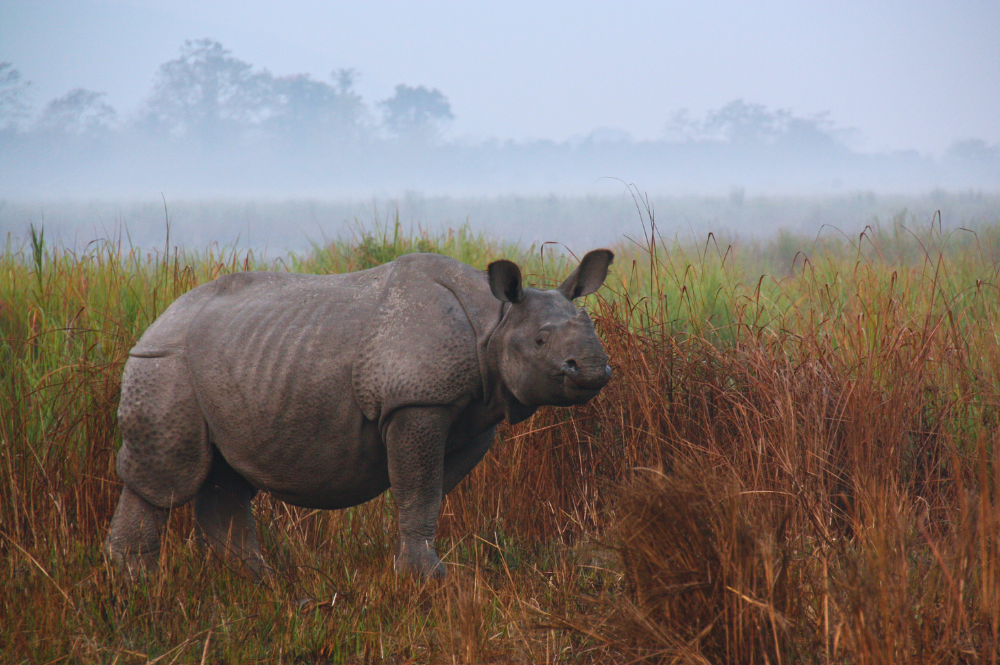Between June and September each year, heavy rains sweep across India as part of its monsoon cycle. Bringing up to 90% of the country’s rainwater for an entire year, the impact of India’s monsoon on wildlife and on people is huge.
Despite being a natural phenomenon that’s occurred for many years, the monsoon can have devastating consequences. So far in 2024, it’s been reported that 76 people have tragically lost their lives, with many more struggling with illness and injuries. Crops have been washed away, and key infrastructure and people’s homes have been damaged, leaving many people vulnerable.
When it comes to wildlife, recent reports from Kaziranga National Park (home to most of the world’s Greater one-horned rhinos) have shared that more than 130 animals, including six rhinos, have died due to this year’s flooding.
Two major rivers run through Kaziranga National Park; the Brahmaputra (the fourth largest river in the world) and the Barak River. Both rivers are crucial to the alluvial floodplain ecosystem that makes Kaziranga such a perfect habitat for rhinos. Each year, when the monsoon arrives, Kaziranga’s rivers overflow their banks, flooding water into the surrounding low-level plains. As the water level rises, animals are pushed out of their usual spaces, towards higher ground. Those that can’t, succumb to the monsoon.
Naturally, hearing news like this can be tough. But, for wildlife and the environment, the monsoon remains an important and beneficial part of India’s weather pattern. Without the annual flood, Kaziranga’s important ecosystem wouldn’t be able to sustain wildlife year-round. The surge in water helps to distribute nutrients, replenish the soil and remove invasive plant species, rejuvenating the grasslands that are essential for the survival of rhinos and other herbivores living in the Park. Like nature’s very own washing machine, the monsoon ensures that the habitat remains productive overall.
Crucially, despite a small number of losses during the monsoon each year, Kaziranga’s rhino population continues to grow. In the 1960s, there were just 300-400 Greater one-horned rhinos in the Park. Today, there are more than 2,600.
Preserving the natural dynamic of the monsoon is crucial to ensuring Kaziranga, other habitats like it, and the wildlife in them, can thrive. The ongoing impacts of climate change and human development will influence the monsoon, and how ecosystems and the species within them can respond to the heavy rain periods.
As we recognise the importance of the monsoon season, despite the challenges it brings, our focus for rhinos must be on minimising the factors that could cause significant changes to this natural cycle, supporting efforts that help people and wildlife to benefit from the monsoon, together.








